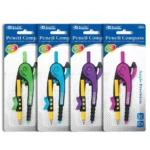As the world of freelancing continues to evolve, it brings with it a host of new challenges and opportunities. Among these, navigating the terrain of payment terms stands out as a pivotal aspect of managing a successful freelance business. One payment term that frequently surfaces in discussions among freelancers is Net 30 benefits.
Under a Net 30 agreement, clients have up to 30 days from the invoice date to settle their bill. While this arrangement is common, it’s crucial for freelancers to understand the potential benefits and drawbacks of offering Net 30 accounts. This guide provides a deep dive into the nuances of Net 30 terms, illuminating the advantages, risks, and strategic approaches freelancers should consider when adopting this payment structure.
Whether Net 30 can serve as a leverage point for your freelance career or if it poses more risk than reward is a nuanced decision that calls for a well-informed analysis.
Potential Advantages of Net 30 for Freelancers
Venturing into Net 30 agreements can open several doors for freelancers. First and foremost, it expands your pool of potential clients. Many established businesses, especially those with larger budgets, operate on Net 30 terms and often expect their partners to do the same. By accommodating these terms, you position yourself to attract lucrative projects and high-value clients.
Moreover, extending Net 30 terms can serve as a testament to your trustworthiness and professionalism, which goes a long way in fostering strong, lasting client relationships.
In markets where freelancers are plentiful, your willingness to work within a Net 30 framework can also differentiate you from competitors, providing you with a competitive edge.
The Flip Side: Challenges and How to Navigate Them
While the benefits are enticing, the challenges of Net 30 are not to be underestimated. The most immediate concern for many freelancers is the potential for cash flow disruption. Waiting up to 30 days for payment can strain your financial resources, especially if you are used to quicker turnarounds. This necessitates a disciplined approach to budgeting and may require the cultivation of a financial safety net or alternative income streams.
Another risk involves the possibility of late or outright non-payment. To safeguard against these risks, it’s essential to establish clear contracts that outline late payment penalties and detailed dispute resolution processes.
Finally, the administrative burden of managing Net 30 terms—tracking invoices, monitoring due dates, and following up on late payments—can be significant. Investing in a quality freelance management platform can alleviate some of these challenges, streamlining the process of invoice and payment tracking.
The decision to embrace Net 30 is multi-faceted, requiring a balance between the potential for expanded opportunities and the necessity of mitigating inherent risks. In the sections that follow, we will delve deeper into strategies that freelancers can employ to effectively navigate the Net 30 terrain, ensuring that the benefits are maximized while the drawbacks are kept in check.
Potential Advantages of Net 30 for Freelancers
Net 30 payment terms can significantly benefit freelancers in various ways, from expanding their opportunities to forging stronger client relationships. Here’s a closer look at some of the notable advantages:
Expand Your Client Pool
Flexibility in payment terms, especially the willingness to offer Net 30, can open doors to a wider array of lucrative projects and high-value clients. Many established businesses, particularly those with considerable budgets, prefer or require these terms.
By accommodating Net 30, freelancers can make themselves attractive to a segment of clients that might not consider them otherwise. This approach can lead to engagements with prestigious organizations, potentially boosting both income and reputation.
Cultivate Strong Client Relationships
Opting for Net 30 payment terms reflects a level of trust and professionalism that can significantly strengthen client relationships. This trust demonstrates confidence in the client’s business practices and fosters a sense of respect and partnership.
Strong, positive relationships with clients often lead to repeat business, referrals, and an overall healthier professional network. Over time, these relationships prove to be invaluable, contributing not just to immediate revenue but to long-term business stability and growth.
Gain a Competitive Edge
In a market where freelancers might hesitate to accept Net 30 terms due to concerns about cash flow, showing a readiness to embrace such terms can differentiate you from competitors. This willingness can make you a preferable option for businesses that are accustomed to or insist on these payment cycles. By strategically offering Net 30, you convey flexibility and understanding of business norms, qualities that are highly valued by many clients.
Considering the Challenges
While there are distinct advantages to offering Net 30 payment terms, freelancers must also consider the challenges that can arise. Understanding these potential issues is essential for developing strategies to mitigate their impact effectively.
Cash Flow Considerations
One of the primary challenges with Net 30 is the delay it introduces in receiving payments, which can strain a freelancer’s cash flow. Managing this delay requires careful financial planning, ensuring you have a buffer to cover your expenses during waiting periods.
Diversifying income streams and maintaining a meticulous budget are crucial strategies for navigating this challenge without compromising your financial stability.
Risk of Late or Non-Payment
Another significant concern with Net 30 is the risk that clients may pay late or, in worst-case scenarios, not at all. To safeguard against these risks, freelancers must establish clear, ironclad contracts that outline the consequences of late payments (e.g., interest charges or work stoppage) and detail dispute resolution processes. This legal groundwork is vital for protecting yourself and providing a clear course of action should payment issues arise.
Increased Administrative Burden
Adopting Net 30 payments can increase the administrative workload for freelancers. Tracking invoices, monitoring payment due dates, and following up on late payments can be time-consuming tasks. Investing in efficient freelance management platforms can help streamline these processes, reducing the time and effort required to manage payment terms.
Tools like The CEO Creative, Honeybook, Bonsai, Wave Accounting, and FreshBooks offer features designed to alleviate the administrative challenges associated with Net 30, enabling freelancers to focus more on their work and less on financial management.
Understanding the benefits and challenges of Net 30 payment terms enables freelancers to make informed decisions about whether and how to incorporate these terms into their business practices. By carefully weighing the potential advantages against the risks and implementing strategic practices, freelancers can navigate the complexities of Net 30 and harness its benefits for their business growth and stability.
Effective Strategies for Managing Net 30
Managing Net 30 payment terms successfully requires a blend of vigilant client selection, clear communication, and strategic incentives to ensure a steady cash flow. Here are some proven strategies:
Be Selective with Clients
Not all clients are created equal, especially when it comes to reliable payment practices. Before extending Net 30 terms, research a client’s financial health and payment history. Trusted clients who appreciate the value of your work are less likely to delay payments intentionally. Consider this selectivity as a form of risk management, preserving your financial stability while fostering relationships with reliable partners.
Negotiate Payment Terms When Possible
While Net 30 might be the standard, there’s always room for negotiation, especially with new clients or smaller projects. Attempt to shorten the payment cycle to Net 15 or even Net 7 for quicker turnover. Express the benefits of a shorter payment term, such as a more focused engagement period and the ability to rapidly move through project cycles, which can be appealing to many clients.
Introduce Incentives for Early Payment
A small discount for early payment can be a win-win for both you and your client. For instance, offering a 2% discount for payments made within 10 days can encourage clients to prioritize your invoice. This incentive also creates a positive relationship dynamic, associating punctual payments with mutual benefit rather than viewing late fees as punitive measures.
Implement Payment Milestones
For larger projects, breaking down the payment into milestones linked to specific deliverables can ensure a more consistent cash flow. This strategy not only aligns payment more closely with project progress but also reduces the risk associated with a single, large payment at the project’s end. Clearly define these milestones in your contract to avoid misunderstanding and ensure agreement from all parties.
Leveraging Technology: Tools for Effective Net 30 Management
 Image courtesy: Unsplash
Image courtesy: Unsplash
The right technology can make managing Net 30 terms far less burdensome, providing tools for invoicing, payment tracking, and even client communication. Let’s look at how to leverage technology effectively.
Overview of Net 30 Vendor Options
There are several tools and platforms designed to aid freelancers with Net 30 arrangements. Options like The CEO Creative, Honeybook, Bonsai, Wave Accounting, and FreshBooks offer functionalities tailored to the unique challenges of freelancers, such as invoicing, contract management, and financial reporting. These tools can significantly reduce the time and energy spent on administrative tasks, allowing more focus on your core work.
Selecting the Right Net 30 Management Partner
Choosing a Net 30 management tool that best suits your needs involves considering several factors such as the feature set, ease of use, integration capabilities, pricing, and scalability. Look for solutions offering comprehensive support, like seamless integrations with accounting software and banks, to streamline your finance management further. Additionally, a platform’s ability to grow with your business is crucial, ensuring you won’t need to switch systems at critical growth stages.
Spotlight on The CEO Creative
Among the myriad of tools available, The CEO Creative stands out due to its freelancer-focused features including invoicing, payment tracking, and contract management. Designed specifically to address the challenges freelancers face with Net 30 terms, it emphasizes minimizing administrative overhead.
Further, The CEO Creative is not just about managing finances; it provides resources and a community for freelancers, aiming at comprehensive business support. Tools for client proposals and relationship management also make it an attractive choice for those looking to expand their client base while managing Net 30 effectively.
In conclusion, while Net 30 payment terms present both opportunities and challenges, adopting effective management strategies and leveraging the right technological tools can mitigate risks and capitalize on the benefits.
Through selective client engagement, clear terms negotiation, incentives for early payment, and strategic use of milestones, freelancers can navigate Net 30 arrangements more confidently.
Furthermore, choosing a tech partner like The CEO Creative can streamline Net 30 management, reduce administrative workload, and support business growth, making it a worthwhile consideration for any freelancer navigating the complexities of Net 30.
Why The CEO Creative is the best vendor for freelancers
The CEO Creative stands out as a premier solution for freelancers navigating the intricacies of Net 30 and other payment terms. With its comprehensive suite of tools tailored specifically for freelance professionals, The CEO Creative not only simplifies transactional processes but also aids in the broader aspects of business management, ensuring freelancers can focus on their craft with the confidence that the administrative side is well-handled.
The benefits The CEO Creative could provide for freelancers
The CEO Creative brings a multitude of benefits to freelancers, enhancing their ability to manage and grow their businesses effectively:
– Streamlined Operations: By providing an all-in-one platform for invoicing, payment tracking, contract management, and business reporting, The CEO Creative reduces the time freelancers spend on administrative tasks.
– Empowerment Through Tools: With features designed from the ground up to support the unique needs of freelancers, the platform empowers users to create professional, customizable contracts and invoices, track time efficiently, and manage finances with precision.
– Community Support: Access to a community of fellow freelancers and a wealth of resources offers valuable insights and knowledge sharing, fostering an environment of growth and collaboration.
– Enhanced Client Relationship Management: Proposals and client management tools are integral to The CEO Creative, helping freelancers to attract and retain high-value clients, an essential component for those utilizing Net 30 terms.
The CEO Creative advices for freelancers
The CEO Creative provides actionable advice for freelancers, aiming to optimize their use of Net 30 terms and navigate the challenges they may face. Key pieces of advice include:
– Selective Offering: Freelancers are encouraged to offer Net 30 on a case-by-case basis, focusing on clients where the benefits outweigh the potential drawbacks.
– Strong Contractual Agreements: Emphasizing the importance of having detailed contracts that clearly outline payment terms and penalties for late payments to safeguard their interests.
– Early Payment Incentives: The suggestion to consider offering discounts for early payments as a strategy to shorten the payment cycle.
– Cultivating Financial Stability: Advice on maintaining a financial cushion and diversifying income streams to mitigate the cash flow challenges inherent in Net 30 arrangements.
How The CEO Creative can help freelancers with bills
Through its suite of financial management tools, The CEO Creative aides freelancers in maintaining a steady cash flow, crucial for covering their bills while waiting for Net 30 payments.
The platform’s invoicing and payment tracking functionalities ensure that freelancers can easily monitor which payments are outstanding, while its financial reporting capabilities offer insights into cash flow trends, helping freelancers plan and budget accordingly.
Mitigating Risk with Additional Strategies
To further mitigate the risks associated with Net 30 payment terms, freelancers can employ several strategies beyond those offered by platforms like The CEO Creative.
Client Screening
Before entering into a Net 30 agreement, conducting thorough research on potential clients is essential. This involves checking reviews, testimonials, or, for larger projects, assessing their creditworthiness. By understanding a client’s history and reliability, freelancers can make informed decisions, minimizing the risk of late or non-payments.
Exploring Invoice Factoring
Invoice factoring can serve as a valuable strategy for freelancers dealing with Net 30 terms. By selling unpaid invoices to a factoring service at a reduced rate, freelancers can access immediate cash flow, transferring the responsibility of collection to the factoring service. This approach can provide much-needed financial stability, albeit at the cost of a percentage of the invoice value.
Recurring Payments Model
For freelancers working with clients on an ongoing basis, transitioning to a recurring payments model can circumvent the need for Net 30 terms entirely. By agreeing on a regular payment schedule, freelancers secure a predictable income stream, simplifying budgeting and financial planning.
The Importance of Communication
Effective communication with clients throughout the Net 30 cycle is paramount. Proactively informing clients of upcoming due dates, and addressing any inquiries or issues swiftly, can prevent delays in payment. Establishing open, transparent communication channels fosters trust and can lead to more consistent compliance with payment terms.
In conclusion, while Net 30 can present challenges for freelancers, the adoption of strategic measures, coupled with the support of comprehensive platforms like The CEO Creative, can not only mitigate these risks but also enhance business management and growth opportunities. By carefully employing these strategies, freelancers can navigate Net 30 terms to their advantage.
The Final Verdict: Is Net 30 Right for You?
 Image courtesy: Unsplash
Image courtesy: Unsplash
Net 30 payment terms are a common fixture in the freelancing world, offering both advantages and drawbacks. Whether or not it’s the right choice for your freelance business hinges on various factors, including your financial stability, clientele, industry norms, and your own risk tolerance. Let’s break down these considerations to help you make an informed decision.
Assessing Your Financial Stability
Before jumping on the Net 30 bandwagon, take a hard look at your financial situation. Can your cash flow withstand the 30-day wait—or longer, should there be delays—for client payments? Having a financial cushion or alternative income streams can mitigate the risk of cash flow issues that might arise from extended payment terms. If you’re living invoice to invoice, however, adopting Net 30 without a safety net could put undue strain on your finances.
Understanding Your Clientele
The nature of your clientele plays a significant role in determining whether Net 30 is a viable option. Working with larger, established businesses may necessitate offering Net 30 terms, as these entities often have set payment cycles that cannot be easily altered. On the other hand, small businesses or individual clients may not have stringent payment practices, potentially allowing for more flexible—or immediate—payment arrangements. Understand who your clients are and their payment tendencies to decide if Net 30 aligns with your business model.
Industry Standards and Their Impact
In some industries, Net 30 is practically the norm, and opting out could limit your opportunities. If that’s the case in your field, embracing Net 30 with the right strategies in place can help you remain competitive and open to more lucrative projects. However, if Net 30 isn’t a standard expectation among your peers, you might have more latitude to negotiate terms that are more favorable and less risky for your freelance business.
Your Risk Tolerance
Lastly, consider your personal comfort level with the inherent risks of Net 30, such as delayed payments or, in the worst-case scenario, non-payment.
Implementing safeguarding measures—like thorough client vetting, structured contracts, and clear communication—can mitigate these risks, but they can’t eliminate them entirely. Your willingness to deal with these potential headaches is a critical factor in deciding if Net 30 is suitable for you.
In conclusion, Net 30 payment terms are neither universally good nor bad; their suitability depends on a nuanced assessment of your business’s financial health, client base, prevailing industry practices, and your tolerance for risk.
By thoroughly weighing these factors, you can make a deliberate choice that supports your freelance business’s sustainability and growth.
Your strategy may involve selective use of Net 30, negotiating shorter payment terms, or even forgoing it altogether for more immediate payment options, depending on what makes the most sense for you and your clients.
Conclusion
Net 30 payment terms represent a balancing act for freelancers, poised between opportunity and challenge. To navigate this landscape successfully, it’s vital to adopt a strategic approach. Consider the full spectrum of benefits and drawbacks before deciding if Net 30 aligns with your freelance business model. Equipped with the right strategies, safeguards, and tools, freelancers can mitigate the risks associated with these payment terms while capitalizing on the potential benefits.
– Selectivity Is Vital: Not all clients or projects are suited for Net 30 payment terms. Exercising discretion and offering these terms to clients who enhance your portfolio and financial stability can lead to more fruitful engagements.
– Contracts Are Your Safeguard: Comprehensive contracts that clearly delineate payment terms, deadlines, and repercussions for late payments are paramount. These legal documents act as a protective shield, ensuring you have recourse in the event of disputes or non-payment.
– Communication Is Key: Transparent, ongoing communication with clients regarding payment expectations and project progress helps preempt misunderstandings and payment delays. A proactive approach to communication can foster trust and solidify long-term client relationships.
Ultimately, whether or not to embrace Net 30 as a part of your freelance business operations is a decision that relies on a careful assessment of your financial health, client base, and the broader context of your industry.
If employed judiciously, it can open doors to new opportunities and contribute to the growth and sustainability of your freelance endeavor.
Remember, in the world of freelancing, being adaptable, informed, and prepared is key to turning potential challenges into avenues for success.









